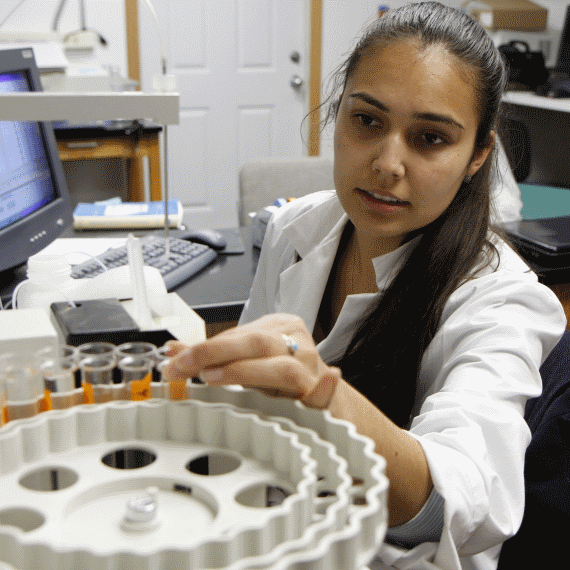
Native Environmental Science at Northwestern Indian College
Source: Native News Network
WASHINGTON – Labor Day pays tribute to the social and economic achievements of American workers. The first observance of Labor Day was likely on September 5, 1882, when some 10,000 workers assembled in New York City for a parade. That celebration inspired similar events across the country, and by 1894 more than half the states were observing a “workingmen’s holiday” on one day or another.
That same year, Congress passed legislation and President Grover Cleveland signed the bill on June 29, the first Monday in September would be designated as “Labor Day.” This national holiday is a creation of the labor movement in the late 19th century.
The following statistics that provide an overview of the labor force in the country today were furnished by the US Census Bureau:
Who Are We Celebrating?
155.7 million
Number of people 16 and over in the nation’s labor force in May 2013.
Our Jobs
Largest Occupations May 2012
Retail Salespeople
4,340,000 employees
Cashiers
3,314,010 employees
Combined food preparation and serving workers, including fast food
2,943,810 employees
Office clerks, general
2,808,100 employees
Registered nurses
2,633,980 employees
Waiters and waitresses
2,332,020 employees
Customer service representatives
2,299,750 employees
Laborers and freight, stock, and material movers, hand
2,143,940 employees
Janitors and cleaners, except maids and housekeeping cleaners
2,097,380 employees
Secretaries and administrative assistants, except legal medical, and executive
2,085,680 employees
Largest Occupations 1910
Farmers (owners and tenants)
6,132,000 employees
Farm laborers, wageworkers
2,832,000 employees
Farm laborers, unpaid family workers
2,514,000 employees
Operatives and kindred workers, manufacturing
2,318,000 employees
Laborers, nonmanufacturing industries
2,210,000 employees
Laborers, manufacturing
1,487,000 employees
Salesmen and sales clerks, retail trade
1,454,000 employees
Housekeepers, private household – living out
1,338,000 employees
Managers, officials, and proprietors, retail trade
1,119,000 employees
Mine operatives and laborers, crude petroleum & natural gas extraction
907,000 employees
847,516
The number of paid employees (for pay period including March 12) who worked for a gasoline station in the US in 2011. Oregon was the first state to make Labor Day a holiday in February 1887. Oregon (9,634 paid gasoline station employees), along with New Jersey (15,734 paid gasoline station employees), are the only states without self-service gasoline stations.
15.9 million
The number of wage and salary workers age 16 and over represented by a union in 2012. This group includes both union members (14.4 million) and workers who report no union affiliation but whose jobs are covered by a union contract (1.6 million).
14.5 million
Number of female workers 16 and over in service occupations in 2011. Among male workers 16 and over, 11.2 million were employed in service-related occupations.
1.9 Percent
Percentage increase in employment in the US between December 2011 and December 2012. Employment increased in 287 of the 328 largest counties (large counties are defined as having employment levels of 75,000 or more).
7.4 Percent
Percentage increase over the year in employment in Elkhart, Indiana, between December 2011 and December 2012, compared with national job growth of 1.9 percent. Within Elkhart, the largest employment increase occurred in manufacturing, which gained 5,479 jobs over the year.
Another Day, Another Dollar
$48,202 and $37,118
The 2011 real median earnings for male and female full-time, year-round workers, respectively.
Fastest Growing Jobs
70 Percent
Projected percentage growth from 2010 to 2020 in the number of personal care aides (607,000). Analysts expect this occupation to grow much faster than the average for all occupations. Meanwhile, the occupation expected to add more positions over this period than any other is registered nurses (711,900).
Employee Benefits
84.7 Percent
Percentage of full-time workers 18 to 64 covered by health insurance during all or part of 2011.
Say Goodbye to Summer
Labor Day is celebrated by most Americans as the symbolic end of the summer and the start of the back-to-school season.
25,448
The number of shoe stores for back-to-school shopping in 2011. Other choices of retail establishments abound: there were 28,128 family clothing stores, 7,093 children and infants clothing stores, 8,144 office supply and stationery stores, 8,407 bookstores and 8,625 department stores.
21,227
The number of sporting goods stores nationwide in 2011. In US sports, college football teams usually play their first games the week before Labor Day, with the NFL traditionally playing their first game the Thursday following Labor Day.
48,548
The number of travel agents employed full time, year-round in 2011. In addition, there were 15,067 tour and travel guides employed full time, year-round nationwide, according to the 2011 American Community Survey. On a weekend intended to give US workers a day of rest, many climb into their drivers’ seats or board an airplane for a quick end of the summer getaway.
The Commute to Work
5.7 million
Number of commuters who left for work between midnight and 4:59 am in 2011. They represented 4.3 percent of all commuters.
4.3 Percent
Percentage of workers 16 and over who worked from home in 2011.
76.4 Percent
Percentage of workers 16 and over who drove alone to work in 2011. Another 9.7 percent carpooled and 2.8 percent walked from home.
25.5 Minutes
The average time it took workers in the US to commute to work in 2011. Maryland and New York had the most time-consuming commutes, averaging 32.2 and 31.5 minutes, respectively.
